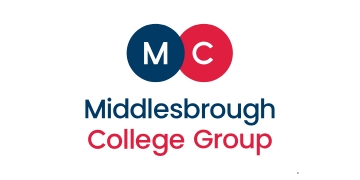The disadvantage gap is one of education’s most persistent challenges. The link between high deprivation and low attainment is a constant concern for policymakers and educators alike – but are we looking for solutions in the wrong place?
Schools Week readers won’t need to be reminded of the extensive evidence that socioeconomic disadvantage affects educational outcomes. Nor can they have failed to note that progress in closing it had stalled before the pandemic, only to go into reverse since.
And that’s not for want of effort from school staff or politicians, but if what we have been doing isn’t working, then what should we be doing instead?
Until now, closing the disadvantage gap in schools has tended to focus on high-quality teaching and tutoring supported by activities designed to mitigate the worst effects of poverty, such as food parcels, uniform clubs, digital access and social and extra-curricular activities.
While these interventions are valuable, what’s often missing is a deeper, evidence-based understanding of what works and why. There is a lack of discussion on how educational disadvantage affects the cognitive and emotional experience of children and why tackling it is so crucial.
The disadvantage gap is so pervasive because family life has been changed not just by poverty but by a decline in mental health and wellbeing. It’s not just about a lack of money; it’s the effect poverty has on the entire structure of a family.
This doesn’t just affect how children feel about themselves and the world around them. It also alters their brain structure.
It doesn’t matter what the cause of the disadvantage is, the impact is the same. It’s not just a “learning gap” – it’s a cognitive disadvantage. When children’s basic needs are unmet, their cognitive functioning suffers, making it harder for them to focus, engage and succeed.
Closing the disadvantage gap in the classroom means teachers must somehow mitigate for these deep-seated effects. Before children can fully access the curriculum, they need help to think and feel differently.
Disadvantage alters children’s brain structure
It’s not as simple as identifying disadvantaged children on the register and holding teachers accountable for their progress. Done badly, this only adds pressure that can undermine the sense these children have that they are important and have value.
Instead, here are four practical strategies that successful schools are taking to genuinely mitigate the impact of disadvantage in the classroom:
Use data for deeper insight
Disadvantage takes many forms. A simple label cannot capture it, and it cannot tell teachers how to tackle it.
Collect and analyse all available data to build a comprehensive picture of each child’s circumstances. Understanding their challenges and the issues they face will allow every teacher who works with that child to give them better support.
Prioritise full engagement
Setting high expectations must mean more than aspirational targets. Teachers must also have high expectations for participation and create tasks that support every child to be actively involved in learning, regardless of their background.
Get students talking
Articulating thoughts helps solidify understanding, while having a strong vocabulary is linked to long-term academic and career success. Developing subject-specific and school-wide oracy strategies can be a powerful tool to level the playing field.
Measure the impact
Don’t assume an intervention is effective just because research suggests it should be. Continuously assess its impact on student progress and be prepared to refine or adapt your approach as needed.
But remember: the impact may not be immediately measurable in outcomes. Improvements in self-belief, self-efficacy and participation are early signs of progress too.
Closing the disadvantage gap requires a shift in mindset. It’s not simply about compensating for economic hardship; it’s about reshaping how disadvantaged pupils experience education.
Teachers can play a vital role in this transformation, providing students with the tools, confidence and opportunities they need to break the cycle of poverty and wider emotional effects.
Research-based practical steps can ensure every child has the chance to thrive in our schools. And the first step is to know and understand their individual needs.
Closing the Disadvantage Gap in Schools: A Visual Workbook is available here












We ned to engage with those who experience and who have experienced inequity, injustice and poverty.
Those who have against the odds overcome deep disadvantage.
A protective cloak needs to be wrapped around our most disadvantaged families, whatever their makeup.
Mental Health is a basic need for everyone!
Those who thrive should support those who have not had the opportunity.
School leaders have this as a priority at all times.
Empathetic and compassionate teachers who move mountains and take risks to help their pupils and families.
Representation from all marginalised groups who understand the lack of opportunities for these groups.
School staff from the communities of our children.
These are the most basic but needed priorities as well as evidenced based approaches.
Realigned policies and well thought out strategies.
Bench marking and target setting for all groups affected.
Much good work is going on but all agencies must work together to support our most disadvantaged.
I’m not sure people understand modern day poverty. Homes where families share bedrooms, no dining room table, tag team parenting meaning children don’t observe adult interactions…compounded by fewer TAs so they don’t see it in the classroom either. No garden to play in. The list goes on